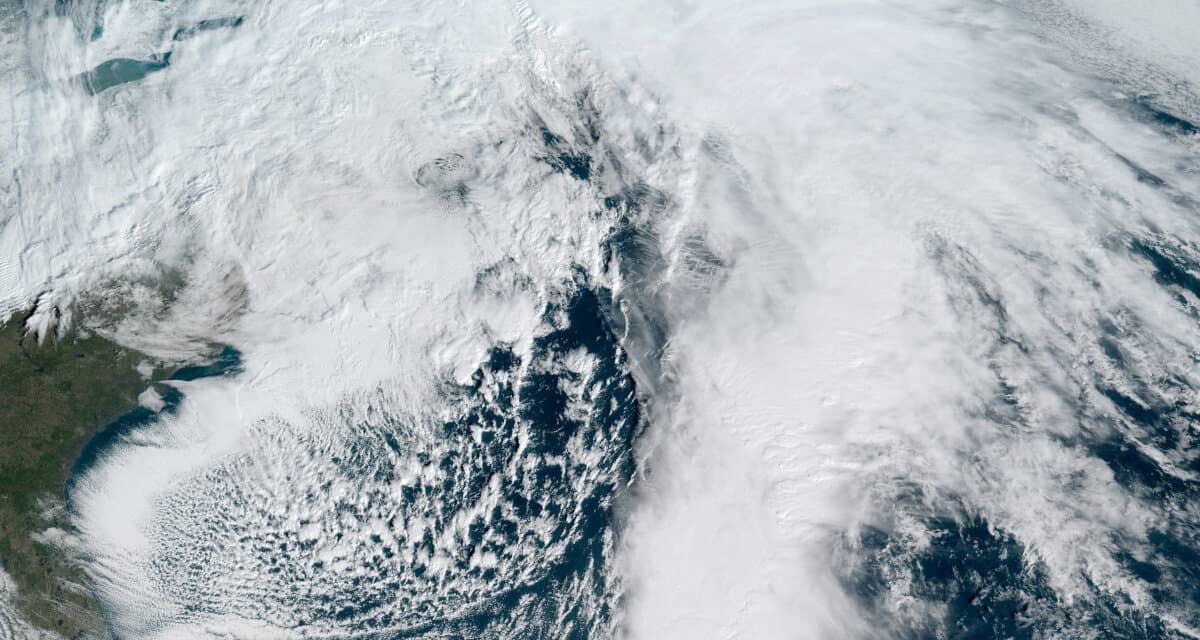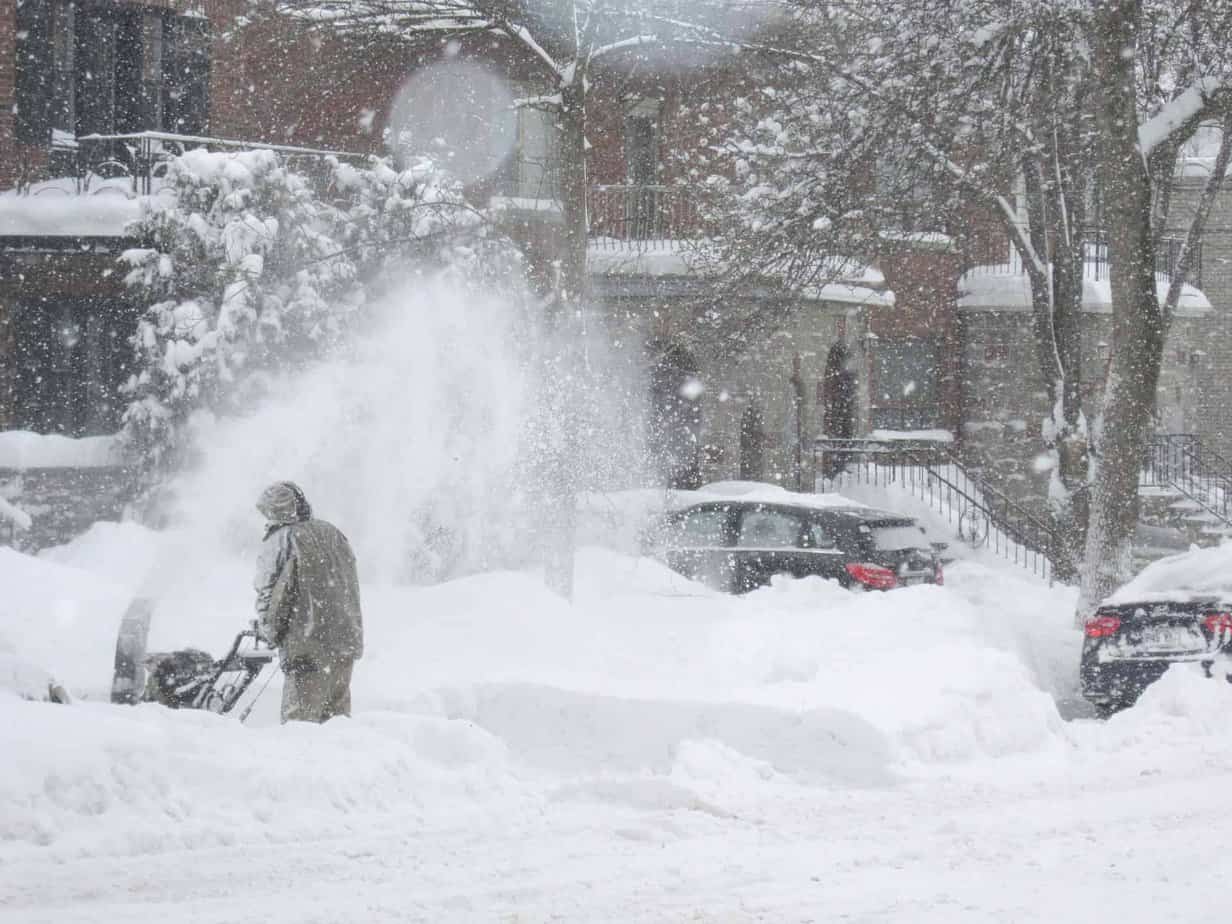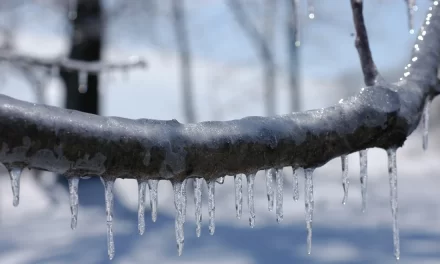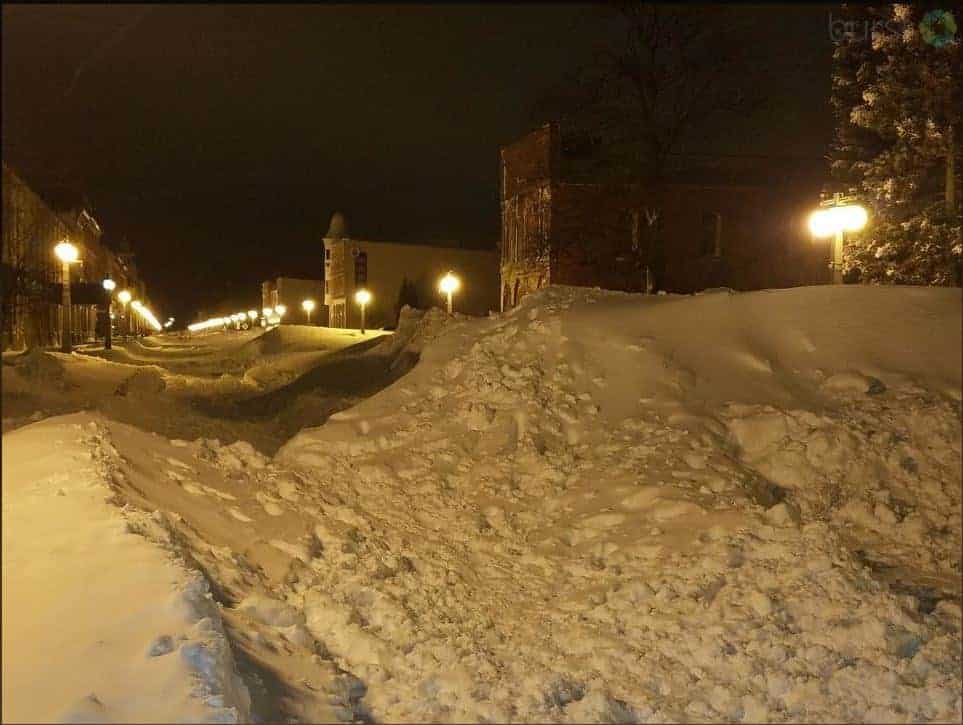The Nor’easter Orlena as seen from an NOAA satellite on February 2, 2021 off the East Coast dumped up to 37 inches of snow on Pennsylvania and New Jersey, and two feet in places like New York City and Lowell, MA. NOAA Satellite Image
Worst Storm Since 2016 Dumps 2 Feet on New York City—Boston
On January 25, an extra-tropical cyclone formed over the Pacific Ocean. Forecasts called for heavy snowfall, rain, and strong winds in California. The Weather Prediction Center began issuing advisories on the 26th. The next day, the system sent a concentrated plume of moisture toward California with high winds causing power outages across northern California. Over 390,000 utility customers lost power. The system weakened as it moved through the country into the Midwest on January 30 where it dropped several inches of snow over the storm center and up to 13 inches over the northern states of Wisconsin, Indiana, Illinois, and Ohio.
Chicago’s O’Hare Airport canceled 100 flights out of the city, and the Illinois Department of Transportation made 1800 plows and trucks available for the storm.
On February 1, the system transitioned to a Nor’easter off the Northeast Coast. Damage totals from Orlena are not yet available, but the storm is responsible for at least 7 deaths. The Weather Channel gave the storm the unofficial name “Orlena.”
Winter Storm #Orlena is set to intensify today with heavy snow and strong winds snarling travel in the Northeast: https://t.co/rPNgVly2gV pic.twitter.com/vfV9aLrUkz
— The Weather Channel (@weatherchannel) February 1, 2021
Other Groundhog Day blizzards occurred in 2011 and 2015 with record snowfalls.
West Coast Impacts Hit Hard
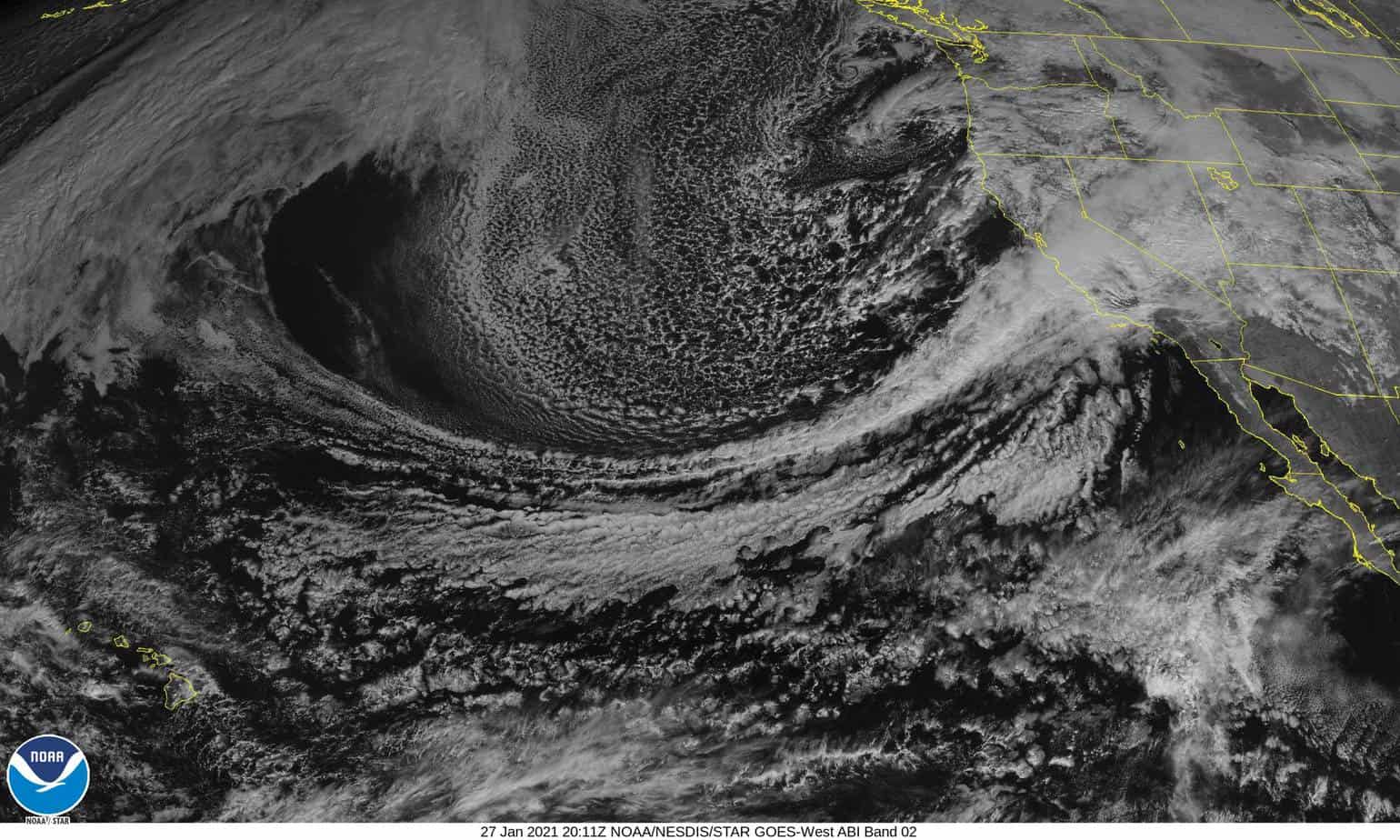
Visible in this NOAA satellite image from January 27 is the extra-tropical cyclone forming off the west coast and the Atmospheric River of Moisture that fueled 107 inches of Snow in the Sierras, Mudslides along the coast, and a blizzard with nearly 40-inches of snow in New Jersey and Pennsylvania. The extra-tropical cyclone crossed the USA from the Pacific Ocean and reformed over the the Atlantic near the East Coast and Mid-Atlantic.
Two people died in California, one in a flooded drain, the other a skier at Mammoth Mountain found in deep snow. Another person was injured in a mudslide. Authorities evacuated at least 7000 people at risk of mudslides in Salinas. Mudslides caused extensive property damage throughout Southern California, including a large section of Highway 1 at Big Sur.
Pacific Gas and Electric reported 600,000 people Without Power at one point.
Mammoth Mountain Ski Area reported 94 inches of snow in 72 hours and 107 inches over the entire event. The Sierra Nevada experienced blizzard conditions and Alpine Meadows reported wind gusts over 100 MPH and a peak gust of 126 MPH—equivalent to sustained winds in a category 3 hurricane.
Orlena Brought Heavy Snow to the Midwest
Chicago pic.twitter.com/3yLvFpYiyb
— Javier (@Javier39086260) February 4, 2021
Storm warnings issued before the storm warned of up to six inches of snow in Illinois with higher totals north, and power outages throughout the affected area. As the storm drew closer and the snow began, predicted totals gradually increased as the storm passed through the area. Homeowners readied portable generators for emergency power and bought gasoline from local filling stations ahead of the storm.
Racine, Wisconsin received over 13 inches. Northeast Illinois had totals that reached 10 to 12 inches. Wind gusts reached 45 to 50 MPH according to local reports. Further south, Midway Airport in Chicago had 11.3 inches before the system moved into Ohio.
Nor’easter Facts
Extratropical Cyclones that form over the Atlantic Ocean in conjunction with a low-pressure system that moves offshore are often called Nor’easters. Most common from October through March, they can bring heavy rain, wet snow, and ice along with wind and coastal flooding. Blizzard conditions often accompany high wind and heavy snow.
Nor’easter Orlena Hammers East Coast

Some of the heaviest northeast snowfalls in recent history were recorded after Orlena became a Nor’easter off the East Coast. Mount Pocono, Pennsylvania and Mount Arlington, New Jersey received 37 and 36 inches, respectively. Fishkill, New York and Lowell, Massachusetts outside of Boston, reported between 24 and 25 inches.
New York cancelled nearly all outbound flights. Police and State Police Departments across the region responded to hundreds of vehicle crashes. A firetruck spun out in Richmond, Virginia and injured four firefighters.
Long Island reported blizzard conditions and subway service was suspended in parts of New York. Orlena caused Coastal Flooding in New Jersey and Long Island.
Heavy, wet snow combined with strong wind caused numerous power outages.

